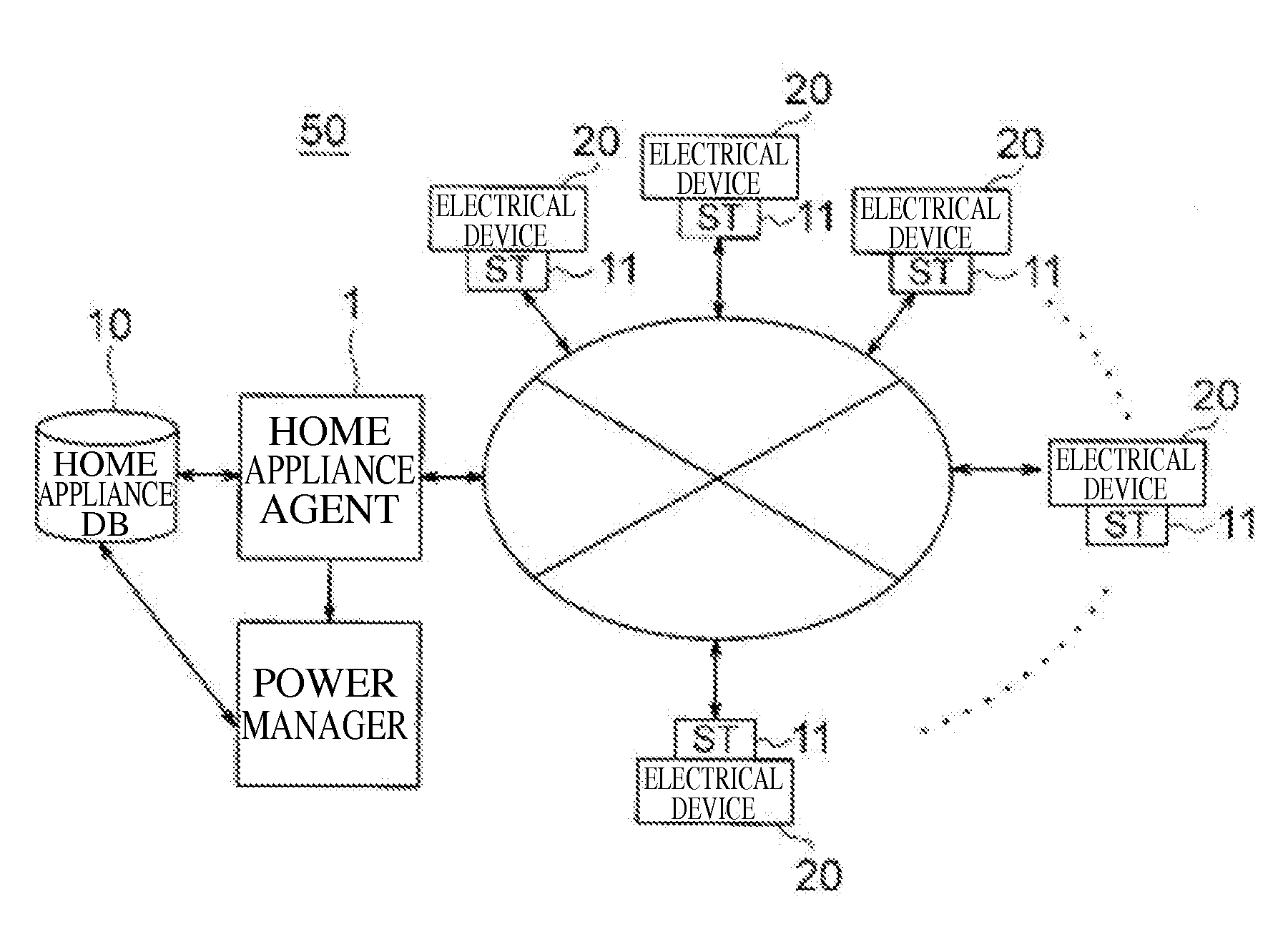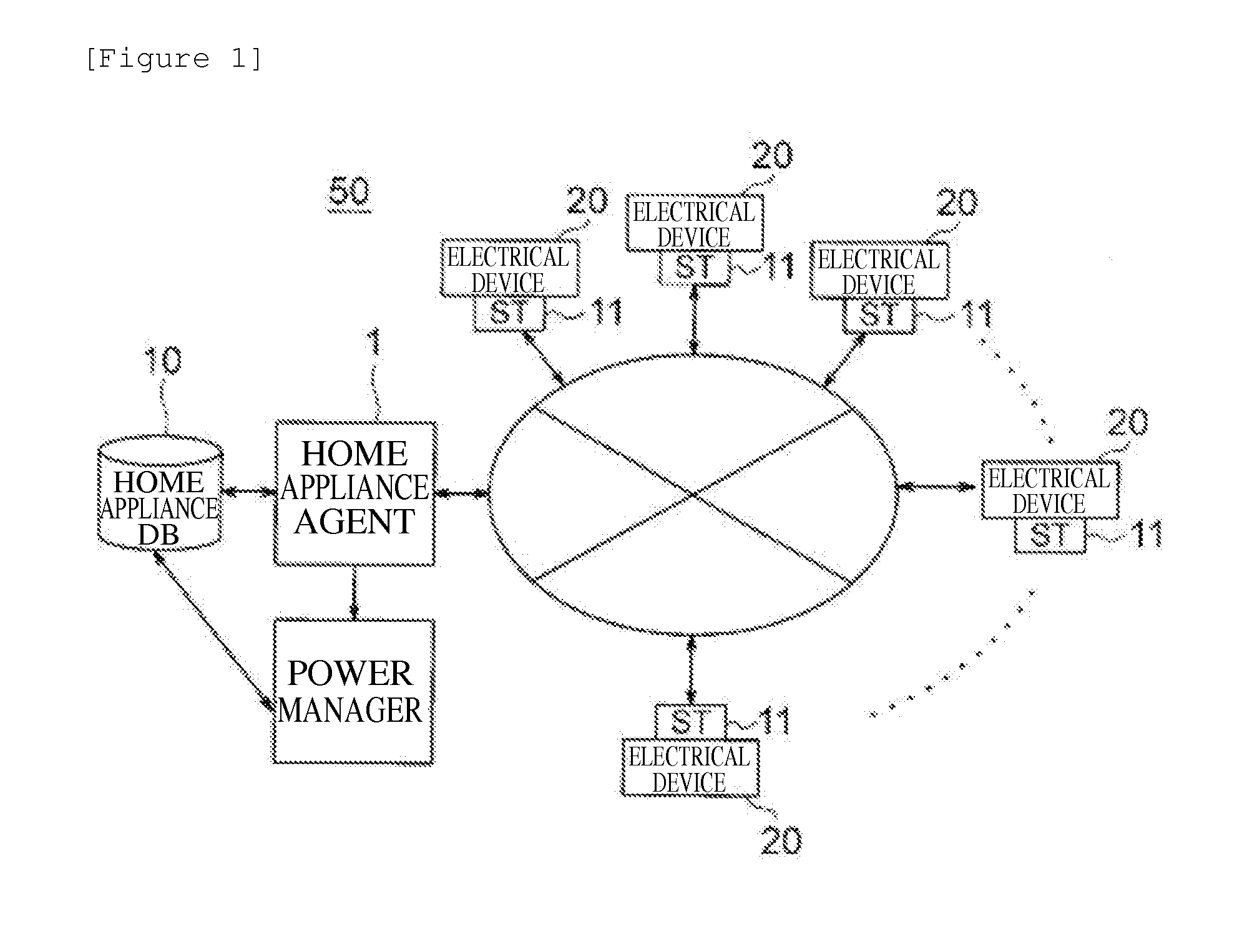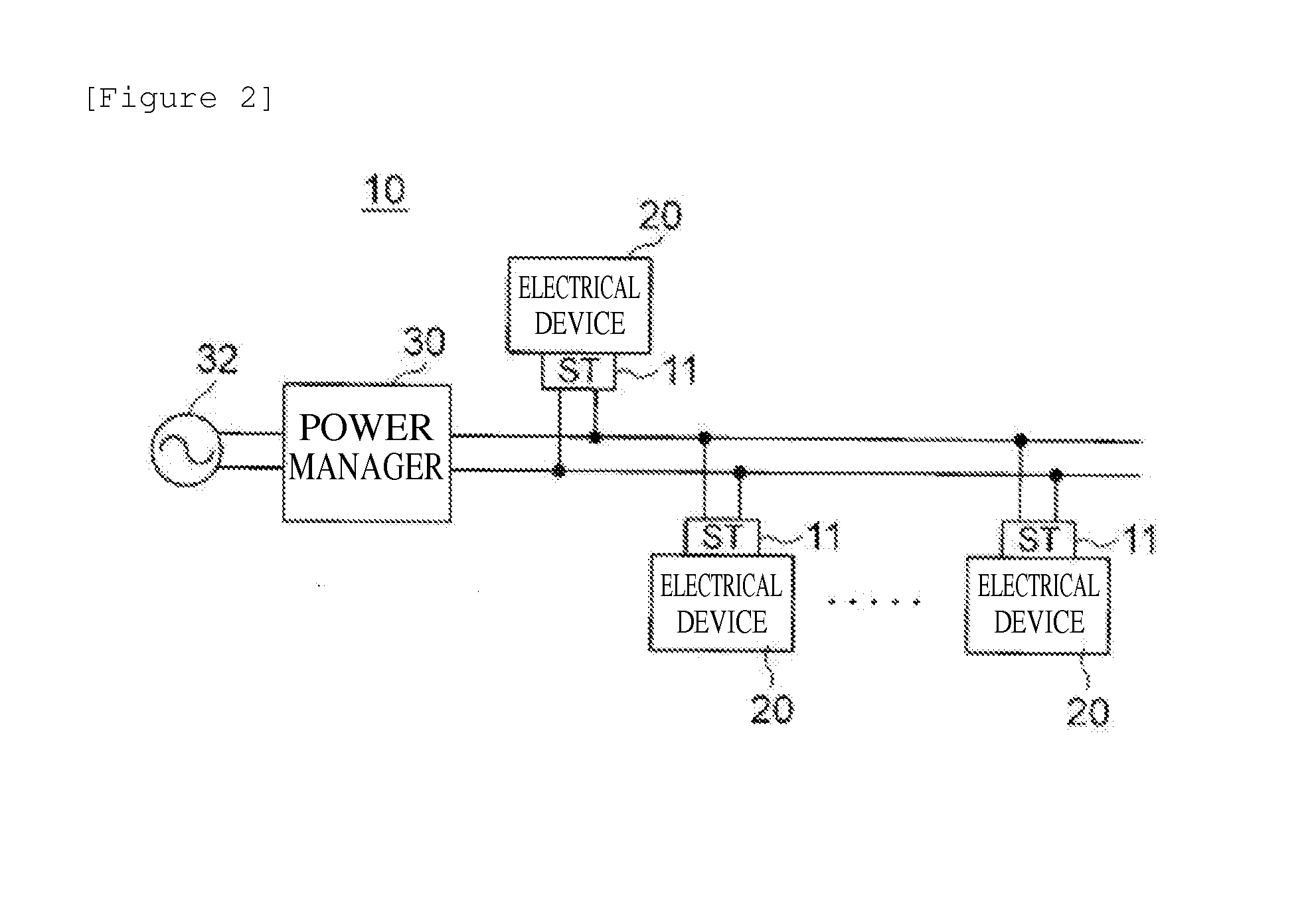On-demand power control system, on-demand power control system program, and computer-readable recording medium recording the same program
a power control system and power control technology, applied in the direction of electric variable regulation, process and machine control, instruments, etc., can solve the problems of not being able to guarantee a power reduction rate that can meet a request for power saving, cannot control power supply in real time, and heavy load on the arbitration server, so as to prevent the desired use effect of impairment and not impairing the quality of life of users
- Summary
- Abstract
- Description
- Claims
- Application Information
AI Technical Summary
Benefits of technology
Problems solved by technology
Method used
Image
Examples
first embodiment
[0198]FIG. 8 is a functional block diagram of a first embodiment showing functions of a power manager shown in FIG. 1.
[0199]Reference numeral 1 in FIG. 8 denotes a power manager; 10, a memory; and 11, an ST. The power manager is composed of initial target value updating means 120 and power arbitration means 122. Reference characters (1) denote consumed power transmitted from the ST. As preprocessing, the power manager converts the consumed power to a power use plan which determines used power for a minimum control interval τ and stores the power use plan, instantaneous power of an initial target value, and maximum instantaneous power in a memory 10, before the priority apparatus is activated. Reference characters (2) denote a power request message transmitted from the ST. The power request message is transmitted to the power arbitration means 122.
[0200]The initial target value updating means 120 has a function of allocating a difference between instantaneous power with an initial ta...
second embodiment
[0274]The above-described dynamic priority control means 1 can finally control instantaneous power to (or to below) maximum instantaneous power and perform control so as to maintain integral power consumption within the upper limit C (Wh). However, an unexpected increase in instantaneous power may occur due to, e.g., a load change during use of a device, and instantaneous power may exceed the maximum instantaneous power. A second embodiment for coping with such a case will be described.
[0275]FIG. 18 is a functional block diagram of the second embodiment.
[0276]A power manager is composed of initial target value updating means 120, power arbitration means 122, and continuous monitoring means 124.
[0277]The initial target value updating means 120 and power arbitration means 122 have the same functions as the means described above, and a description thereof will be omitted.
[0278]The continuous monitoring means 124 monitors consumed power at all times. If the overall consumed power exceed...
example 1
[0396]Maintenance of user's QoL and realizability of the power upper limit in the present invention were objectively evaluated. To objectively evaluate user's QoL first, an evaluation function relating to QoL was designed and the experiment was performed by using this.
[0397]In objectively evaluating user's QoL, to what degree a home appliance function expected by a user was performed is an important evaluation criterion. It is thought that if the function can be performed according to a request from the user, the degree of user's satisfaction is the highest, and that if the degree to which the function is performed lowers with respect to the request, the degree of user's satisfaction correspondingly lowers. In this specification, therefore, a priority is used as an index representing the degree of realization of the home appliance function. A characteristic in which the priority is increased as the degree of realization of the function is reduced is utilized; the value of priority i...
PUM
 Login to View More
Login to View More Abstract
Description
Claims
Application Information
 Login to View More
Login to View More - R&D
- Intellectual Property
- Life Sciences
- Materials
- Tech Scout
- Unparalleled Data Quality
- Higher Quality Content
- 60% Fewer Hallucinations
Browse by: Latest US Patents, China's latest patents, Technical Efficacy Thesaurus, Application Domain, Technology Topic, Popular Technical Reports.
© 2025 PatSnap. All rights reserved.Legal|Privacy policy|Modern Slavery Act Transparency Statement|Sitemap|About US| Contact US: help@patsnap.com



